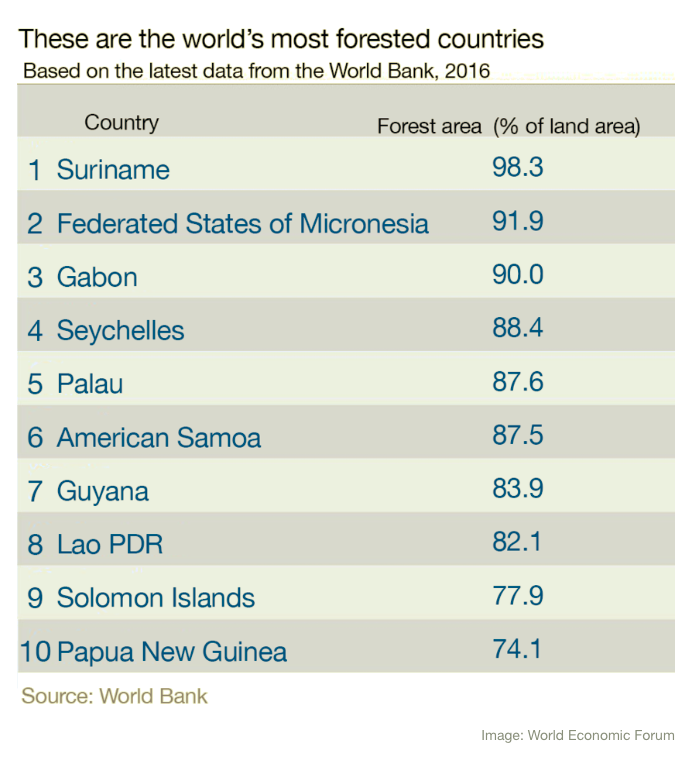Across the globe, there are deep pockets of green working as powerful lungs for all of us.
Forests cover a third of the world’s land. They play a critical role in the ongoing battle against the impacts of climate change. They absorb harmful pollutants, regulate water flows, and support the habitats of migratory plants and animals.
But they are under threat. Since 1990, the planet has lost 1.3 million square kilometres of tree cover – an area larger than South Africa – to deforestation for forest and paper products and agriculture, according to the World Bank.
When trees are destroyed, greenhouse gases pour into the atmosphere. In the Amazon, recent fires have released 228 megatonnes of carbon dioxide. Swathes of the rainforest are burning in Brazil, which has recorded the highest number of August fires since 2010.

Protecting this essential resource and avoiding further deforestation could cut CO2 emissions by as much as 4 billion tonnes per year – the equivalent of taking half the world's cars off the road, according to the Tropical Forest Alliance, an initiative hosted by the World Economic Forum that works with governments and businesses to tackle the problem.
In each of the world’s top 10 tree-covered countries, forests make up a huge percentage of the land area – from just under three-quarters in Papua New Guinea to more than 98% in South America's Suriname.
Source : This is part of an article originally published on World Economic Forum


















